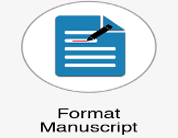Study on Biosorption of Lead (II) and Manganese (II) from Aqueous Solutions Using Sodium Alginate and Pleurotus ostreatus (Oyster Mushroom) Beads
Abstract
Keywords
Full Text:
View Full TextReferences
Kamarudzamana NA, Chayb CT, Amira A, Taliba AS. Biosorption of Mn (II) ions from Aqueous Solution by Pleurotus Spent Mushroom Compost in a Fixed-Bed Column. Social and Behavioral Sciences. 2015;195:2709-16.
Talbi A, Kemper K, Minnatullah K, Foster S, Tuinhof A. An Overview of Current Operational Responses to the Arsenic Issue in South and East Asia. Washington, DC: World Bank; 2005.
World Health Organization. Guidelines for drinking-water quality. 3rd ed. Geneva: World Health Organization; 2008. Cited June 2017. Accessed December 2018. Available from: https://www.who.int/water_sanitation_health/dwq/fulltext.pdf.
World Health Organization. Lead in drinking-water. Background document for preparation of WHO Guidelines for drinking-water quality. Geneva: World Health Organization; 2011. WHO/SDE/WSH/03.04/9/Rev/1.
Bacquart T, Frisbie S, Mitchell E, Grigg L, Cole C, Small C, et al. Multiple inorganic toxic substances contaminating the groundwater of Myingyan Township, Myanmar: Arsenic, manganese, fluoride, iron, and uranium. Elsevier BV. 2015;517. Available from: http://dx.doi.org/10.1016/j.scitotenv.2015.02.038.
Chen G, Viengvilay K, Yu W, Mao T, Qu ZZ, Liang B, et al. Effect of Different Modification Methods on the Adsorption of Manganese by Biochar from Rice Straw, Coconut Shell, and Bamboo. ACS. 2023.
Maw A, Phyu M, Aung PK, Mar NM, Khin KK, Khaing SO, et al. Approach to assessment of heavy metals contamination in drinking water, Mandalay region, Myanmar. IOP Conference Series: Earth and Environmental Science. 2020.
United States Environmental Protection Agency. Secondary Drinking Water Regulations: Guidance for Nuisance Chemicals. Washington, DC, USA; 2013. Available from: https://www.epa.gov.
Xiangliang P, Jianlong W, Daoyong Z. Biosorption of Pb (II) by Pleurotus ostreatus immobilized in calcium alginate gel. Process Biochemistry. 2005;40:2799-803.
Abbas SH, Ismail IM, Mostafa TM, Sulaymon AH. Biosorption of heavy metals: A review. J Chemical Sci Technol. 2014;3(4):74-102. Available from: https://www.researchgate.net/publication/266795209.
Qazilbash AA. Isolation and characterization of heavy metal tolerant biota from industrially polluted soils and their role in bioremediation [Doctoral dissertation]. Quaid-i-Azam University Islamabad; 2004.
Khan MW, Ali MA, Khan NA, Muhammad Aslam Khan MA, Abdul Rehman A, Jav N. Effect of Different Levels of Lime and pH on Mycelial Growth and Production Efficiency of Oyster Mushroom (Pleurotus spp). Pak J Bot. 2013;45(1):297-302.
Kariuki Z, Kiptoo J, Onyancha D. Biosorption studies of lead and copper using rogers mushroom biomass 'Lepiota Hystrix'. South African Journal of Chemical Engineering. 2017;23.
Fadel M, Hassanein NM, Elshafei MM, Mostafa AH, Ahmed MA, Khater HM. Biosorption of manganese from groundwater by biomass of Saccharomyces cerevisiae. HBRC Journal. 2017;13(1):106-13.
Mahmoud A, Massoud M, Abdel-Motaal F, El-Zayat S. Tolerance and Biosorption of Manganese, Iron and Aluminium by Five Aspergillus Species Isolated from Freshwater. Catrina: The International Journal of Environmental Sciences. 2017;16:61-9.
Taha A, Hussien W, Gouda SA. Bioremediation of Heavy Metals in Wastewaters: A Concise Review. Egypt J Aquat Biol Fish. 2023;27(1):143-66.
Ali H, Khan E, Ilahi I. Environmental chemistry and ecotoxicology of hazardous heavy metals: environmental persistence, toxicity, and bioaccumulation. J Chem. 2019:1-14.
Dumas P, Miller L. The use of synchrotron infrared microspectroscopy in biological and biomedical investigations. Vib Spec. 2003;32:3-21.
Wolkers WF, Oliver AE, Tablin F, Crowe JH. A Fourier transform infrared spectroscopy study of sugar glasses. Carb Res. 2004;339:1077-85.
Yee N, Benning LG, Phoenix VR, Ferris FG. Characterization of metal-Cyanobacteria sorption reactions: A combined Macroscopic and infrared spectroscopic investigation. 2004.
De Freitas F, Battirola LD, Arruda R. Assessment of the Cu(II) and Pb(II) removal efficiency of aqueous solutions by the dry biomass Aguapé: kinetics of adsorption. Environ Monit Assess. 2019;191:751.
Imran M, Anwar K, Akram M, Shah GM, Ahmad I, Samad Shah N, et al. Biosorption of Pb(II) from contaminated water onto Moringa oleifera biomass: kinetics and equilibrium studies. International Journal of Phytoremediation. 2019;21(8):777-89.
Elkhaleefa A, Ali IH, Brima EI, Shigidi I, Elhag AB, Karama B. Evaluation of the Adsorption Efficiency on the Removal of Lead (II) Ions from Aqueous Solutions Using Azadirachta indica Leaves as an Adsorbent. Processes. 2021;9(3):559.
Nuholu Y, Ekmekyapar Kul Z, Kul S. Pb (II) biosorption from the aqueous solutions by raw and modified tea factory waste (TFW). Int J Environ Sci Technol. 2021;18:2975-86.
Ezeonuegbu BA, Machido DA, Whong CMZ, Japhet WS, Alexiou A, Elazab ST, et al. Agricultural Waste of Sugarcane Bagasse as Efficient Adsorbent for Lead and Nickel Removal from Untreated Wastewater: Biosorption, Equilibrium Isotherms, Kinetics and Desorption Studies. Biotechnology Reports. 2021;30:e00614.
Amar MB, Walha K, Salvadó V. Evaluation of Olive Stones for Cd(II), Cu(II), Pb(II) and Cr(VI) Biosorption from Aqueous Solution: Equilibrium and Kinetics. Int J Environ Res. 2020;14:193-204.
Keryanti K, Mulyono EWS. Determination of Optimum Condition of Lead (Pb) Biosorption Using Dried Biomass Microalgae Aphanothece sp. Periodica Polytechnica Chemical Engineering. 2021;65(1):116-23.
Rozman U, Kalíková G, Marolt G, Skalar T, gajnar Gotvajn A. Potential of Waste Fungal Biomass for Lead and Cadmium Removal: Characterization, Biosorption Kinetic and Isotherm Studies. Environmental Technology & Innovation. 2020;18:100742.
Alghamdi A, Rajan KP, Thomas SP. Comprehensive Evaluation of Moringa Oleifera Seed as a Low-Cost Adsorbent for Removal of Manganese (Mn) from Aqueous Solutions. Case Studies in Chemical and Environmental Engineering. 2024;9:100635.
De Castro AE, Penido ES, Souza TF, Camargos JB, Lobato RLM, Ribeiro-Soares J, et al. Biochars from Modified Sugarcane Bagasse for Manganese Removal from Mining Effluents. Journal of Environmental Chemical Engineering. 2023;11:110761.
Fseha YH, Sizirici B, Yildiz I. Manganese and Nitrate Removal from Groundwater Using Date Palm Biochar: Application for Drinking Water. Environmental Advances. 2022;8:100237.
Chang Q, Ali A, Su J, Wen Q, Bai Y, Gao Z, et al. Efficient Removal of Nitrate, Manganese, and Tetracycline by a Polyvinyl Alcohol/Sodium Alginate with Sponge Cube Immobilized Bioreactor. Bioresource Technology. 2021;331:125065.
DOI: https://doi.org/10.36462/H.BioSci.202403
Refbacks
- There are currently no refbacks.
Copyright (c) 2024 Soe et al.,

This work is licensed under a Creative Commons Attribution 4.0 International License.
...........................................................................................................................................................
Other "Highlights in" Journals
Highlights in Bioinformatics, Highlights in Chemistry, Highlights in Science, Highlights in Microbiology, Highlights in Plant Science
........................................................................................................................................
International Library of Science "HighlightsIn" is an Open Access Scientific Publishers, aiming to science and knowledge support













